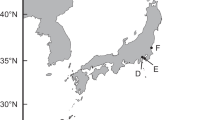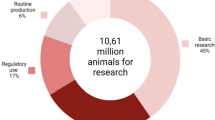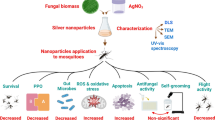Abstract
Within the dinoflagellate genus Gambierdiscus several species are well-known producers of ciguatoxins (CTXs) and maitotoxins (MTXs). These compounds are potent marine toxins that accumulate through the food chain, leading to a foodborne disease known as ciguatera when contaminated fish is consumed. Given the threat that the presence of these toxins in seafood may pose to human health and fisheries, there is an evident necessity to assess the potential toxicity of Gambierdiscus sp. in a particular area. Thus, the purpose of this work was to evaluate the production of CTX and MTX of 10 strains of Gambierdiscus australes isolated from the Selvagem Grande Island (Madeira, Portugal) and El Hierro Island (Canary Islands, Spain). The strains were first characterized by light microscopy and species were confirmed by molecular biology, being identified as G. australes. Following the species identification, CTX and MTX production of G. australes extracts was evaluated at the exponential growth phase using neuro-2a cell-based assays. Additionally, the production of MTX was also investigated in two of the G. australes strains collected at the stationary growth phase. Interestingly, 9 out of 10 strains were found to produce CTX-like compounds, ranging from 200 to 697 fg equiv. CTX1B cell−1. None of the G. australes strains showed MTX-like activity at the exponential phase, but MTX production was observed in two strains at the stationary growth phase (227 and 275 pg equiv. MTX cell−1). Therefore, the presence of G. australes strains potentially producing CTX and MTX in these Macaronesian Islands was confirmed.





Similar content being viewed by others
References
Adachi R, Fukuyo Y (1979) Thecal structure of a marine toxic dinoflagellate Gambierdiscus toxicus gen et sp-nov collected in a ciguatera-endemic area. Bull Jpn Soc Sci Fish 45:67–71
Aligizaki K, Nikolaidis G, Fraga S (2008) Is Gambierdiscus expanding to new areas? Harmful Algae News 36:6–7
Andree KB, Fernandez-Tejedor M, Elandaloussi LM, Quijano-Scheggia S, Sampedro N, Garces E, Camp J, Diogene J (2011) Quantitative PCR coupled with melt curve analysis for detection of selected Pseudo-nitzschia spp. (Bacillariophyceae) from the northwestern Mediterranean Sea. J Appl Environ Microbiol 77:1651–1659
Bagnis R, Chanteau S, Chungue E, Hurtel JM, Yasumoto T, Inoue A (1980) Origins of ciguatera fish poisoning-a new dinoflagellate, Gambierdiscus toxicus Adachi and Fukuyo, definitively involved as a causal agent. Toxicon 18:199–208
Boada LD, Zumbado M, Luzardo OP, Almeida-González M, Plakas SM, Granade HR, Abraham A, Jester ELE, Dickey RW (2010) Ciguatera fish poisoning on the West Africa coast: an emerging risk in the Canary Islands (Spain). Toxicon 56:1516–1519
Bomber JW, Tindall DR, Venable CW, Miller DM (1990) Pigment composition and low-light response of 14 clones of Gambierdiscus toxicus. In: Granéli E, Sundström B, Edler L, Anderson DM (eds) Toxic Marine Phytoplankton. Elsevier, New York, pp 263–268
Caillaud A, Canete E, de la Iglesia P, Gimenez G, Diogene J (2009) Cell-based assay coupled with chromatographic fractioning: a strategy for marine toxins detection in natural samples. Toxicol in Vitro 23:1591–1596
Caillaud A, de la Iglesia P, Darius HT, Pauillac S, Aligizaki K, Fraga S, Chinain M, Diogene J (2010a) Update on methodologies available for ciguatoxin determination: perspectives to confront the onset of ciguatera fish poisoning in Europe. Mar Drugs 8:1838–1907
Caillaud A, Yasumoto T, Diogene J (2010b) Detection and quantification of maitotoxin-like compounds using a neuroblastoma (neuro-2a) cell based assay. Application to the screening of maitotoxin-like compounds in Gambierdiscus spp. Toxicon 56:36–44
Caillaud A, de la Iglesia P, Barber E, Eixarch H, Mohammad-Noor N, Yasumoto T, Diogène J (2011) Monitoring of dissolved ciguatoxin and maitotoxin using solid-phase adsorption toxin tracking devices: application to Gambierdiscus pacificus in culture. Harmful Algae 10:433–446
Carnicer O, Tunin-Ley A, Andree KB, Turquet J, Diogene J, Fernandez-Tejedor M (2015) Contribution to the genus Ostreopsis in Reunion Island (Indian Ocean): molecular, morphologic and toxicity characterization. Cryptogam Algol 36:101–119
Chinain M, Darius HT, Ung A, Cruchet P, Wang Z, Ponton D, Laurent D, Pauillac S (2010) Growth and toxin production in the ciguatera-causing dinoflagellate Gambierdiscus polynesiensis (Dinophyceae) in culture. Toxicon 56:739–750
Chinain M, Faust MA, Pauillac S (1999) Morphology and molecular analyses of three toxic species of Gambierdiscus (Dinophyceae): G. pacificus, sp nov., G. australes, sp nov., and G. polynesiensis, sp nov. J Phycol 35:1282–1296
Cuypers E, Abdel-Mottaleb Y, Kopljar I, Rainier JD, Raes AL, Snyders DJ, Tytgat J (2008) Gambierol, a toxin produced by the dinoflagellate Gambierdiscus toxicus, is a potent blocker of voltage-gated potassium channels. Toxicon 51:974–983
Dickey RW, Plakas SM (2010) Ciguatera: a public health perspective. Toxicon 56:123–136
Diogène J, Reverté L, Rambla-Alegre M, del Río V, de la Iglesia P, Campàs M, Palacios O, Flores C, Caixach J, Ralijaona C, Razanajatovo I, Pirog A, Magalon H, Arnich N, Turquet J (2017) Identification of ciguatoxins in a shark involved in a fatal food poisoning in the Indian Ocean. Sci Rep 7:8240
Faust MA (1995) Observation of sand-dwelling toxic dinoflagellates (Dinophyceae) from widely differing sites, including two new species. J Phycol 31:996–1003
Felsenstein J (1985) Confidence-limits on phylogenies—an approach using the bootstrap. Evolution 39:783–791
Fraga S, Rodriguez F (2014) Genus Gambierdiscus in the Canary Islands (NE Atlantic Ocean) with description of Gambierdiscus silvae sp nov., a new potentially toxic epiphytic benthic dinoflagellate. Protist 165:839–853
Fraga S, Rodriguez F, Caillaud A, Diogene J, Raho N, Zapata M (2011) Gambierdiscus excentricus sp nov (Dinophyceae), a benthic toxic dinoflagellate from the Canary Islands (NE Atlantic Ocean). Harmful Algae 11:10–22
Fraga S, Rodriguez F, Riobo P, Bravo I (2016) Gambierdiscus balechii sp nov (Dinophyceae), a new benthic toxic dinoflagellate from the Celebes Sea (SW Pacific Ocean). Harmful Algae 58:93–105
Friedman MA, Fernandez M, Backer LC, Dickey RW, Bernstein J, Schrank K, Kibler S, Stephan W, Gribble MO, Bienfang P, Bowen RE, Degrasse S, Flores Quintana HA, Loeffler CR, Weisman R, Blythe D, Berdalet E, Ayyar R, Clarkson-Townsend D, Swajian K, Benner R, Brewer T, Fleming L (2017) An updated review of ciguatera fish poisoning: clinical, epidemiological, environmental, and public health management. Mar Drugs 15(3):72
Fritz L, Triemer RE (1985) A rapid simple technique utilizing calcofluor white M2R for the visualization of dinoflagellate thecal plates. J Phycol 21:662–664
Gomez F, Qiu D, Lopes RM, Lin S (2015) Fukuyoa paulensis gen. et sp nov., a new genus for the globular species of the dinoflagellate Gambierdiscus (Dinophyceae). PLoS One 10:e0119676
Guillard RL (1973) Division rates. In: Stein J (ed) Culture methods and growth measurements. Cambridge University Press, Cambridge, p 289
Hall TA (1999) BioEdit: a user-friendly biological sequence alignment editor and analysis program for windows 95/98/NT. Nucleic Acids Symp Ser 41:95–98
Holland WC, Litaker RW, Tomas CR, Kibler SR, Place AR, Davenport ED, Tester PA (2013) Differences in the toxicity of six Gambierdiscus (Dinophyceae) species measured using an in vitro human erythrocyte lysis assay. Toxicon 65:15–33
Holmes MJ (1998) Gambierdiscus yasumotoi sp. nov. (Dinophyceae), a toxic benthic dinoflagellate from southeastern Asia. J Phycol 34:661–668
Holmes MJ, Lewis RJ, Poli MA, Gillespie NC (1991) Strain dependent production of ciguatoxin precursors (gambiertoxins) by Gambierdiscus toxicus (Dinophyceae) in culture. Toxicon 29:761–775
Hoshaw RW, Rosowski JR (1973) Methods for microscopic algae. In: Stein JR (ed) Handbook of phycological methods, culture methods and growth measurements. Cambridge University Press, Cambridge, pp 53–67
Jukes TH, Cantor CR (1969) Evolution of protein molecules. In: Munro H (ed) Mammalian protein metabolism, vol 3. Academic Press, New York, pp 21–123
Kibler SR, Tester PA, Kunkel KE, Moore SK, Litaker RW (2015) Effects of ocean warming on growth and distribution of dinoflagellates associated with ciguatera fish poisoning in the Caribbean. Ecol Model 316:194–210
Kretzschmar AL, Verma A, Harwood DT, Hoppenrath M, Murray S (2017) Characterization of Gambierdiscus lapillus sp. nov. (Gonyaulacales, Dinophyceae): a new toxic dinoflagellate from the Great Barrier Reef (Australia). J Phycol 53:283–297
Lechat I, Partenski F, Chungue E (1985) Gambierdiscus toxicus: culture and toxin production. In: Gabrie C, Salvat B (eds) Proceedings of the 5th International Coral Reef Congress, Tahiti, vol. 4. Antenne museum-Ephe, Moorea, pp 443–448
Lewis RJ, Holmes MJ (1993) Origin and transfer of toxins involved in ciguatera. Comp Biochem Physiol C 106:615–628
Lewis RJ, Inserra M, Vetter I, Holland WC, Hardison DR, Tester PA, Litaker RW (2016) Rapid extraction and identification of maitotoxin and ciguatoxin-like toxins from Caribbean and Pacific Gambierdiscus using a new functional bioassay. PLoS One 11:e0160006
Lewis RJ, Sellin M, Poli MA, Norton RS, Macleod JK, Sheil MM (1991) Purification and characterization of ciguatoxins from moray eel (Lycodontis javanicus, Muraenidae). Toxicon 29:1115–1127
Litaker RW, Vandersea MW, Faust MA, Kibler SR, Chinain M, Holmes MJ, Holland WC, Tester PA (2009) Taxonomy of Gambierdiscus including four new species, Gambierdiscus caribaeus, Gambierdiscus carolinianus, Gambierdiscus carpenteri and Gambierdiscus ruetzleri (Gonyaulacales, Dinophyceae). Phycologia 48:344–390
Litaker RW, Vandersea MW, Faust MA, Kibler SR, Nau AW, Holland WC, Chinain M, Holmes MJ, Tester PA (2010) Global distribution of ciguatera causing dinoflagellates in the genus Gambierdiscus. Toxicon 56:711–730
Litaker RW, Vandersea MW, Kibler SR, Reece KS, Stokes NA, Steidinger KA, Millie DF, Bendis BJ, Pigg RJ, Tester PA (2003) Identification of Pfiesteria piscicida (Dinophyceae) and Pfiesteria-like organisms using internal transcribed spacer-specific PCR assays. J Phycol 39:754–761
Manger RL, Leja LS, Lee SY, Hungerford JM, Wekell MM (1993) Tetrazolium-based cell bioassay for neurotoxins active on voltage-sensitive sodium-channels—semiautomated assay for saxitoxins, brevetoxins, and ciguatoxins. Anal Biochem 214:190–194
Murata M, Legrand AM, Ishibashi Y, Fukui M, Yasumoto T (1990) Structures and configurations of ciguatoxin from the moray eel Gymnothorax javanicus and its likely precursor from the dinoflagellate Gambierdiscus toxicus. J Am Chem Soc 112:4380–4386
Murata M, Yasumoto T (2000) The structure elucidation and biological activities of high molecular weight algal toxins: maitotoxin, prymnesins and zooxanthellatoxins. Nat Prod Rep 17:293–314
Nagai H, Murata M, Torigoe K, Satake M, Yasumoto T (1992) Gambieric acids, new potent antifungal substances with unprecedented polyether structures from a marine dinoflagellate Gambierdiscus toxicus. J Org Chem 57:5448–5453
NCBI, National Center for Biotechnology Information Search database, U.S. National Library of Medicine (2017) Available online at: https://www.ncbi.nlm.nih.gov/. Accessed by 19th Dec 2017
Nishimura T, Sato S, Tawong W, Sakanari H, Uehara K, Shah MMR, Suda S, Yasumoto T, Taira Y, Yamaguchi H, Adachi M (2013) Genetic diversity and distribution of the ciguatera-causing dinoflagellate Gambierdiscus spp. (Dinophyceae) in coastal areas of Japan. PLoS One 8:e0060882
Parsons ML, Aligizaki K, Bottein M-YD, Fraga S, Morton SL, Penna A, Rhodes L (2012) Gambierdiscus and Ostreopsis: reassessment of the state of knowledge of their taxonomy, geography, ecophysiology, and toxicology. Harmful Algae 14:107–129
Pérez-Arellano J-L, Luzardo OP, Brito AP, Cabrera MH, Zumbado M, Carranza C, Boada LD (2005) Ciguatera fish poisoning, Canary Islands. Emerg Infect Dis 11:1981–1982
Pisapia F, Holland WC, Hardison DR, Litaker RW, Fraga S, Nishimura T, Adachi M, Nguyen-Ngoc L, Sechet V, Amzil Z, Herrenknecht C, Hess P (2017) Toxicity screening of 13 Gambierdiscus strains using neuro-2a and erythrocyte lysis bioassays. Harmful Algae 63:173–183
Otero P, Pérez S, Alfonso A, Vale C, Rodríguez P, Gouveia NN, Gouveia N, Delgado J, Vale P, Hirama M, Ishihara Y, Molgó J, Botana LM (2010) First toxin profile of ciguateric fish in Madeira Arquipelago (Europe). Anal Chem 82:6032–6039
Poch G, Reiffenstein RJ, Baer HP (1995) Quantitative estimation of potentiation and antagonism by dose ratios corrected for slopes of dose-response curves deviating from one. J Pharmacol Toxicol Meth 33:197–204
Provasoli L (1968) Media and prospects for the cultivation of marine algae. In: Watanabe A, Hattori A (eds) Cultures and collection of algae, proceedings of the US-Japanese conference, Hakone, pp 63–75
Reguera, B., Alonso, R., Moreira, A., Méndez, S. 2011 Guía para el diseño y puesta en marcha de un plan de seguimiento de microalgas productoras de toxinas (in Spanish only). COI de UNESCO y OIEA, Paris y Viena. Available online at: http://unesdoc.unesco.org/images/0021/002145/214510s.pdf. Accessed by 19th Dec 2017
Rhodes L, Harwood T, Smith K, Argyle P, Munday R (2014) Production of ciguatoxin and maitotoxin by strains of Gambierdiscus australes, G. pacificus and G. polynesiensis (Dinophyceae) isolated from Rarotonga, Cook Islands. Harmful Algae 39:185–190
Rhodes LL, Smith KF, Munday R, Selwood AI, McNabb PS, Holland PT, Bottein M-Y (2010) Toxic dinoflagellates (Dinophyceae) from Rarotonga, Cook Islands. Toxicon 56:751–758
Rhodes L, Smith KF, Verma A, Curley BG, Harwood DT, Murray S, Kohli GS, Solomona D, Rongo T, Munday R, Murray SA (2017a) A new species of Gambierdiscus (Dinophyceae) from the south-west Pacific: Gambierdiscus honu sp. nov. Harmful Algae 65:61–70
Rhodes LL, Smith KF, Murray S, Harwood DT, Trnski T, Munday R (2017b) The epiphytic genus Gambierdiscus (Dinophyceae) in the Kermadec Islands and Zealandia regions of the southwestern Pacific and the associated risk of ciguatera fish poisoning. Mar Drugs 15:219
Rodríguez F, Fraga S, Ramilo I, Rial P, Figueroa RI, Riobó P, Bravo I (2017) Canary Islands (NE Atlantic) as a biodiversity ‘hotspot’ of Gambierdiscus: implications for future trends of ciguatera in the area. Harmful Algae 67:131–143
Rodriguez I, Genta-Jouve G, Alfonso C, Calabro K, Alonso E, Sanchez JA, Alfonso A, Thomas OP, Botana LM (2015) Gambierone, a ladder-shaped polyether from the dinoflagellate Gambierdiscus belizeanus. Org Lett 17:2392–2395
Roeder K, Erler K, Kibler S, Tester P, Ho VT, Lam NN, Gerdts G, Luckas B (2010) Characteristic profiles of ciguatera toxins in different strains of Gambierdiscus spp. Toxicon 56:731–738
Sambrook J, Fritsch EF, Maniatis T (1989) Molecular cloning: a laboratory manual, 2nd edn. Cold Spring Harbor Laboratory Press, Cold Spring Harbor
Satake A, Murata M, Yasumoto T (1993) Gambierol: a new toxic polyether compound isolated from the marine dinoflagellate Gambierdiscus toxicus. J Am Chem Soc 115:361–362
Scholin CA, Herzog M, Sogin M, Anderson DM (1994) Identification of group and strain-specific genetic markers for globally distributed Alexandrium (Dinophyceae) II. Sequence-analysis of a fragment of the LSU ribosomal rRNA gene. J Phycol 30:999–1011
Smith KF, Rhodes L, Verma A, Curley BG, Harwood DT, Kohli GS, Solomona D, Rongo T, Munday R, Murray SA (2016) A new Gambierdiscus species (Dinophyceae) from Rarotonga, Cook Islands: Gambierdiscus cheloniae sp nov. Harmful Algae 60:45–56
Soliño L, Widgy S, Pautonnier A, Turquet J, Loeffler CR, Flores Quintana HA, Diogène J (2015) Prevalence of ciguatoxins in lionfish (Pterois spp.) from Guadeloupe, Saint Martin, and Saint Barthélmy Islands (Caribbean). Toxicon 102:62–68
Tamura K, Peterson D, Peterson N, Stecher G, Nei M, Kumar S (2011) MEGA5: molecular evolutionary genetics analysis using maximum likelihood, evolutionary distance, and maximum parsimony methods. Mol Biol Evol 28:2731–2739
Yasumoto T, Nakajima I, Bagnis R, Adachi R (1977) Finding of a dinoflagellate as a likely culprit of ciguatera. Bull Jpn Soc Sci Fish 43:1021–1026
Acknowledgements
The authors would like to thank Dr. Olga Carnicer for the helpful advices in sampling and culturing of microalgae. The authors also acknowledge Dr. Ana Raquel Díaz from Universidad de la Laguna (Canary Islands, Spain); Dr. Pedro Diniz from ITB—Investigação e Transferência de Biotecnologia (Madeira, Portugal); and personnel from Direçao Regional das Pescas and Parque Natural da Madeira (Portugal) for their collaboration in the sampling, processing, and shipment of microalgal samples. The research leading to these results has received funding from the European Union Seventh Framework Programme (FP7/2007-2013) under the ECsafeSEAFOOD project (grant agreement no. 311820), from the CERCA Programme/Generalitat de Catalunya, from the Ministerio de Economía, Industria y Competitividad through the SEASENSING (BIO2014-56024-C2-2-R) and CIGUASENSING (BIO2017-87946-C2-2-R) projects. LR acknowledges the scholarship from the ECSafeSEAFOOD project, and AT thanks IRTA-URV-Banco Santander for the PhD grant (2015PMF-PIPF-67). We would like to acknowledge the constructive comments of two anonymous reviewers.
Author information
Authors and Affiliations
Contributions
JD and LR designed the study and carried out the sampling and isolation of microalgae. LR and GdF maintained and scaled up the Gambierdiscus cultures and performed the cytotoxicity assays on neuro-2a cells for CTX and MTX quantification. AT and KA carried out the species identification by molecular biology. SF characterized the species by light microscopy. LR wrote the manuscript. JD and MC participated in the writing and discussion of the manuscript. All authors have revised and approved the final version of the article.
Corresponding author
Rights and permissions
About this article
Cite this article
Reverté, L., Toldrà, A., Andree, K.B. et al. Assessment of cytotoxicity in ten strains of Gambierdiscus australes from Macaronesian Islands by neuro-2a cell-based assays. J Appl Phycol 30, 2447–2461 (2018). https://doi.org/10.1007/s10811-018-1456-8
Received:
Revised:
Accepted:
Published:
Issue Date:
DOI: https://doi.org/10.1007/s10811-018-1456-8




